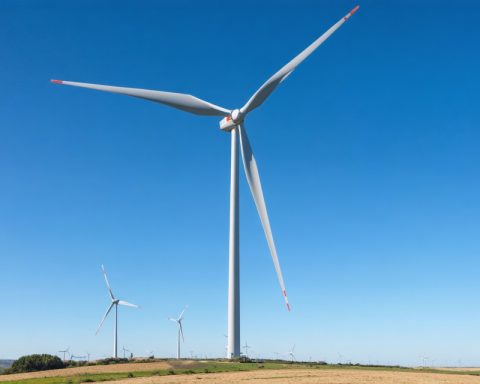- Hybrid solar technology combines solar power with storage or wind, reducing electricity costs by 10% compared to standalone systems.
- These systems ensure continuous power supply by integrating diverse energy sources, enhancing flexibility and reliability.
- Since 2015, solar with battery storage has captured 5% of Europe’s total energy storage market, led by the UK with 62% capacity.
- Poland leads in PV+Wind with 277 MW, while regulatory challenges hinder broader adoption across Europe.
- Hybrid systems optimize existing infrastructures, decrease grid and operational costs, and reduce the levelized cost of electricity.
- Their reliability is highlighted by seamless electricity flow despite natural resource or market fluctuations.
- Europe needs coordinated policies and investments to fully realize the potential of hybrid solar systems.
The vibrant tapestry of Europe’s energy landscape is undergoing a transformation. Hybrid solar technology emerges as a beacon of innovation, promising not just a new dawn for renewable energy but a practical pathway to a more sustainable future. As illuminated by SolarPower Europe, these hybrid systems, blending solar power with storage or wind capabilities, cut electricity costs by a striking 10% compared to traditional standalone projects.
Imagine a world where the sun’s setting rays no longer dictate the limits of solar energy production. This is the promise held by hybrid solar systems—flexibility and reliability combined. The essence of this technology lies in its ability to harness different energy sources, ensuring a continuous power supply even as day turns to night. It’s an eloquent dance of solar panels and energy storage, an orchestra of sun and wind working in harmony.
Since 2015, solar paired with battery energy storage systems has been on an upward trajectory, capturing 5% of the total battery energy storage market across Europe. The United Kingdom emerges as a leader in this renewable revolution, with 62% of its capacity driven by progressive policies and a robust market. However, the broader horizon of PV+Wind hybrid installations remains largely uncharted, with only 555 MW deployed—an opportunity shimmering on the horizon.
Poland leads this niche market with 277 MW of capacity, supported by policies that encourage dual-generation patterns with wind and solar. The Netherlands and Portugal also contribute meaningfully to this growing sector. Yet, the challenge of regulatory gaps lingers, tying the hands of potential developers eager to explore these opportunities.
Hybrid solar systems are not just engineering marvels; they are harbingers of cost savings and efficiency. They leverage existing infrastructures, slash grid connection costs, and offer compelling reductions in operational expenses—all while reducing the levelized cost of electricity. These savings occur because hybrids maximize resource use and optimize energy storage, capturing surplus renewable energy to meet later demand surges.
But the advantages do not stop with economics. The reliability that hybrid systems demonstrate is their hallmark. By merging wind and solar energies or pairing them with storage, these systems provide a seamless flow of electricity, unyielding in the face of fluctuating natural resources or market conditions.
As Europe contemplates its energy future, hybrid solar systems beckon with promise. They are pivotal in reshaping energy strategies, offering a sustainable model that bridges today’s needs with tomorrow’s aspirations. Yet, embracing this potential demands coordinated policy frameworks and investments that foster innovation.
SolarPower Europe paints a picture of untapped potential, urging policymakers to galvanize efforts. The path is clear: only through collective action can the EU harness the full power of hybrid solar, lighting the way to a cleaner, brighter future for all. This is not just about energy; it is about pioneering a resilient future and setting an example for the world to follow.
Unveiling Europe’s Solar Renaissance: How Hybrid Systems Are Powering the Future
The Growing Potential of Hybrid Solar Systems in Europe
The European energy landscape is evolving rapidly, heralding a new era of renewable energy through the adoption of hybrid solar technology. Hybrid solar systems, combining solar power with energy storage—like batteries, or integrating with wind capabilities—are setting the stage for a more sustainable and efficient energy future.
According to industry experts, these hybrid systems reduce electricity costs by approximately 10% compared to traditional solar projects. This offers both economic and environmental benefits, driving their adoption across Europe.
How Hybrid Solar Systems Work
Hybrid solar systems ingeniously harness multiple energy sources to ensure a reliable power supply:
1. Solar Panels: Capture sunlight during the day and convert it into electricity.
2. Energy Storage: Stores excess power generated during peak sunlight hours for use during nighttime or cloudy periods.
3. Wind Integration: Complements solar generation, ensuring energy availability regardless of sunlight.
This multifaceted approach ensures constant energy production, circumventing the limitations of standalone solar systems.
Industry Trends and Market Insights
Since 2015, the role of solar energy paired with battery storage has been on the rise. It now captures 5% of the total battery energy storage market in Europe, and the United Kingdom leads this growth, thanks to its forward-thinking policies and robust renewable infrastructure.
Poland stands out with 277 MW of operational capacity, largely due to supportive policies promoting dual-generation systems. The Netherlands and Portugal have been contributing significantly, albeit regulatory challenges remain a barrier to broader adoption.
Key Benefits of Hybrid Solar Systems
1. Cost Efficiency: Lower grid connection costs and operational expenses enhance project viability.
2. Reliability: Continuous energy supply, seamlessly integrating solar and wind resources.
3. Scalability: Existing infrastructure utilization facilitates easier expansion and scaling.
4. Sustainability: Reduced environmental impact and minimized carbon footprint.
Controversies and Limitations
While hybrid solar systems represent significant progress, challenges persist:
– Regulatory Barriers: Inconsistent policies across Europe complicate development and deployment.
– Investment Needs: High initial costs require substantial investment and supportive policy frameworks.
How to Implement Hybrid Solar Systems
For businesses and policymakers keen to adopt hybrid solar technologies, consider these steps:
1. Feasibility Study: Conduct a thorough assessment of existing infrastructure and potential sites.
2. Policy Navigation: Work with local authorities to understand and leverage available incentives.
3. Partner with Experts: Collaborate with companies experienced in hybrid technology installations.
4. Investment Strategy: Secure funding through grants, public-private partnerships, or loans.
Conclusion and Recommendations
Hybrid solar systems offer a promising path to sustainable energy, characterized by affordability, reliability, and environmental benefits. However, unlocking their full potential requires coordinated efforts from industry stakeholders, government bodies, and investors.
For immediate action, businesses should evaluate their energy needs and explore hybrid options. Meanwhile, policymakers can facilitate growth by developing uniform regulatory frameworks and incentivizing green investments.
For more insights on hybrid solar technologies and their impact on Europe’s energy strategies, visit SolarPower Europe.














